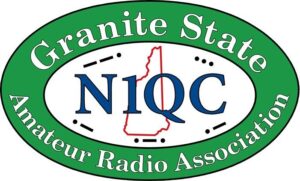
Eric Pfeifer, N1JUR, writes:
Serving ARRL members who reside in the New England sections

Eric Pfeifer, N1JUR, writes:
I am Drew Deskur, KA1M, and I am the Director of the Kopernik Observatory, a public observatory and Informal STEM Education Center in Vestal, New York, in the ARRL Western New York Section in south central New York State. www.kopernik.org
On Wednesday, August 13, Kopernik Observatory will be running a High Altitude Balloon camp for local high school students. On the payload of the balloon, we will be running APRS (K2ZRO-9) for tracking and we will also be flying SSTV on 145. 600 throughout the flight. We plan to launch hopefully between 10 to 10:30 AM (1400-1430 UTC) and the balloon should reach over 100,000 feet. In previous balloon flights, we have had APRS reports from up in Canada. Total flight time should be approximately 3 hours.
Please track the flight on aprs.fi and download the SSTV images if you are able to do so. We would love to receive copies of images received from stations in the Northeast and elsewhere so we can share with the students how altitude matters on VHF. Please send those images to k2zro@kopernik.org. Thank you!
—
Drew Deskur KA1M
Executive Director
Kopernik Observatory & Science Center
Look Up… Dream Big!
www.kopernik.org
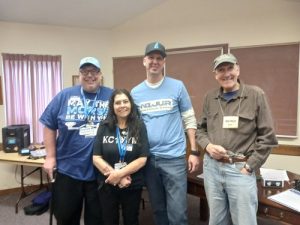 The Granite State Amateur Radio Association had the pleasure of visiting the LDS Youth Group in Peterborough, NH, for a lively and engaging demonstration of ham radio. Kim (KC1VYM), Tim (KC1QDK), Eric (N1JUR), and Ralph (KC1TLY) spent the day sharing their passion for radio technology with over 20 enthusiastic teens and parents—what a fantastic experience!
The Granite State Amateur Radio Association had the pleasure of visiting the LDS Youth Group in Peterborough, NH, for a lively and engaging demonstration of ham radio. Kim (KC1VYM), Tim (KC1QDK), Eric (N1JUR), and Ralph (KC1TLY) spent the day sharing their passion for radio technology with over 20 enthusiastic teens and parents—what a fantastic experience!
 Eric Hansen, KB1VUN, writes on the Twin State RC mailing list:
Eric Hansen, KB1VUN, writes on the Twin State RC mailing list:From ARRL News:
Kids Day runs from 1800 UTC – 2359 UTC. Operate as much or as little as you like.
The event is designed to give on-the-air experience to young people, to foster interest in getting a license of their own, and give older hams a chance to share their stations and love for amateur radio with their children. You can share the excitement with your own kids, grandkids, a Scout troop, a church, or the general public!
All participants are encouraged to post their story and thumbnail photos to the Kids Day Soapbox page. Tell the world about your operations, the fun you had, and the contacts you made! Remember, ARRL must have a completed release form in order to include youth photos (younger than 18 years of age) in ARRL publications.
There will be a second ARRL Kids Day on June 21, 2025.
More information, including frequencies, suggested exchanges, and how to download a certificate, can be found at Kids Day.
Connecticut Section Youth Coordinator Douglas Sharafanowich, WA1SFH, has compiled a best practices document entitled “Running a Successful JOTA Event Station” to share with clubs and groups who sponsor Jamboree On The Air events.
[PDF Download] Douglas Sharafanowich,WA1SFH, writes on the CT-ARES mailing list:
Douglas Sharafanowich,WA1SFH, writes on the CT-ARES mailing list:
SHARE THE MAGIC
Boy Scouts Jamboree On The Air (JOTA) 2024… is COMING!
Saturday – Oct 19
LINK: https://www.arrl.org/jamboree-on-the-air-jota
The Clock is Ticking…
In just about 1 month, you will have the opportunity to introduce kids to Amateur Radio, and help build a DREAM.
This is a great Public Service Event (PSE)
It also is a fun way to “Go Portable”, and field test your gear.
WE NEED YOU!
YOU Make it Happen!
Status (9/13/24):
– I have confirmed requests for JOTA Activity Stations at TWO Boy Scout Camps (Greenwich and Goshen).
and
– I am waiting to hear back to hear back about two additional camps (Redding and New Hartford).
SHARE THE MAGIC
Give the Scouts the opportunity to have conversations On-The-Air.
We NEED YOU… and your equipment.
I am looking to form Teams of 4-6 hams to go to each camp, run a JOTA “Activity Station”, and provide:
– HF radios
– VHF/UHF Mobile Radios
– Appropriate antennas and support gear
NOTE: AC Power is not always available.
Got Questions?
Please contact me at:
ctjotaham@gmail.com
To Volunteer, please go to:
https://tinyurl.com/2ap4okej
Thank you !
Updates to follow.
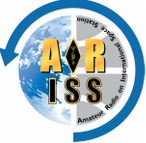 Message to US Educators
Message to US Educators
Amateur Radio on the International Space Station
Contact Opportunity
Call for Proposals
New Proposal Window is open April 8, 2024 – May 19, 2024
April 8, 2024 — The Amateur Radio on the International Space Station (ARISS) program is seeking formal and informal education institutions and organizations, individually or working together, to host an Amateur Radio contact with a crew member on board the ISS. ARISS anticipates that the contacts would be held between January 1, 2025 and June 30, 2025. Crew scheduling and ISS orbits will determine the exact contact dates. To maximize these radio contact opportunities, ARISS is looking for education organizations that will draw large numbers of student participants and integrate the contact into a well-developed education plan.
The window opens April 8, 2024 and the deadline to submit a proposal is May 19, 2024. Proposal information and more details such as expectations, proposal guidelines and the proposal form can be found at www.ariss.org. An ARISS Proposal Webinar session will be held April 17 at 8 PM ET. The Zoom link to sign up is https://us06web.zoom.us/
The Opportunity
Crew members aboard the International Space Station will participate in scheduled Amateur Radio contacts. These radio contacts are approximately 10 minutes in length and allow students to interact with the astronauts through a question-and-answer session.
An ARISS contact is a voice-only communication opportunity via amateur radio between astronauts and cosmonauts aboard the space station and classrooms and communities. ARISS contacts afford education groups’ audiences the opportunity to learn firsthand from astronauts what it is like to live and work in space and to learn about space research conducted on the ISS. Students will also have an opportunity to learn about satellite communication, wireless technology, and radio science. Because of the nature of human spaceflight and the complexity of scheduling activities aboard the ISS, organizations must demonstrate flexibility to accommodate changes in dates and times of the radio contact.
Amateur Radio organizations around the world with the support of NASA and Russian, Canadian, Japanese and European space agencies present educational organizations with this opportunity. The ham radio organizations’ volunteer efforts provide the equipment and operational support to enable communication between crew on the ISS and students around the world using Amateur Radio.
Please direct questions to education@ariss-usa.org .
About ARISS:
Amateur Radio on the International Space Station (ARISS) is a cooperative venture of international amateur radio societies and the space agencies that support the International Space Station (ISS). In the United States, sponsors are the American Radio Relay League (ARRL), Amateur Radio Digital Communications (ARDC), Radio Amateur Satellite Corporation (AMSAT), NASA’s Space Communications and Navigation program (SCaN) and the ISS National Lab—Space Station Explorers. The primary goal of ARISS is to promote exploration of science, technology, engineering, the arts, and mathematics topics. ARISS does this by organizing scheduled contacts via amateur radio between crew members aboard the ISS and students. Before and during these radio contacts, students, educators, parents, and communities take part in hands-on learning activities tied to space, space technologies, and amateur radio. For more information, see http://www.ariss.org.
Media Contact:
Dave Jordan, AA4KN
ARISS PR
Find us on social media at:
Twitter: ARISS_Intl
Facebook: facebook.com/ARISSIntl
Instagram: ariss_intl
Mastodon: ariss_intl@mastodon.hams.
Check out ARISS on Youtube.com.
______________________________
arrl-odv mailing list
arrl-odv@reflector.arrl.org
https://reflector.arrl.org/mai
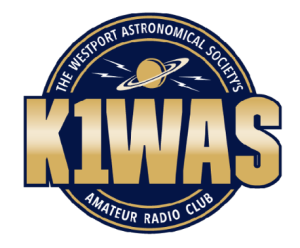 FOR IMMEDIATE RELEASE:
FOR IMMEDIATE RELEASE:
Contact: Dan Wright
k1was@was-ct.org
Phone: (203) 293-8759
Westport, Connecticut – March 13, 2024 – The Westport Astronomical Society (WAS) and its amateur radio station, K1WAS are excited to announce its participation in the observation of the total solar eclipse along the totality line in Texas on April 8, 2024, with a grant from NASA using high-altitude balloons launched by the University of Bridgeport and the University of New Haven.
The K1WAS team will assist the University of Bridgeport, and the University of New Haven with their effort in the Nationwide Eclipse Ballooning Project. The amateur radio club, and many other amateur radio operator members and balloon enthusiasts, will help launch several high-altitude balloons equipped with cameras, sensors, and radio transmitters to capture the eclipse from a unique vantage point high above the Earth’s surface.
“We are thrilled to be able to contribute to the scientific community’s understanding of this celestial event,” said Dan Wright N3DAW, Board Member of the Westport Astronomical Society. “These high altitude balloon missions will offer a perspective of the eclipse that is both breathtaking and informative, helping researchers study the Sun’s corona and the Earth’s atmosphere in new and exciting ways.”
“Since the University of Bridgeport (UB) began its balloon science and payload work in 2013, K1WAS/WAS members have served as mentors and instructors to both myself and dozens of our students,” said Jani Macari Pallis, Ph.D., professor of mechanical engineering, who leads the engineering teams for NASA/Montana State’s Nationwide Eclipse Ballooning Project (NEBP) for the central northeast. “Early on K1WAS/WAS members took the time to instruct in all aspects of high altitude balloon flight: from safe helium usage and transportation, stacking and tying payloads together, creating containers to protect the instruments, communications, launch, tracking and balloon and payload recovery. K1WAS/WAS members have been at each of our launches and served as mentors and team members for UB’s 2017 total solar eclipse team as well as our 2023 annular eclipse team and upcoming 2024 total solar eclipse team. We are particularly indebted to K1WAS/WAS members Larry Reed, AB1JC, Gary Moyher, WE1M, Mike Miciukiewicz, K1MJM, and David Schadlich, KB1LTW.”
The University of New Haven’s Texas team will include ozonesonde payloads during this eclipse to monitor the ozone levels in the atmosphere. Both traditional weather balloons and a newly improved altitude-controlled balloon will be used for this mission. These experiments will provide data analysis, and valuable information to scientists across the planet that will be analyzed after the event.
The launch of the high-altitude balloon will take place from a location near the path of totality in Junction Texas at Texas Tech, where the eclipse will be visible for the longest duration. The balloons will ascend and hover at an altitude of 80,000 feet while gathering data, providing a clear view of the earth as the eclipse’s shadow passes.
Amateur radio operators and astronomy enthusiasts are invited to join the Westport Astronomical Society’s observation efforts by following the balloon’s location which will be captured in real-time using an amateur radio system called APRS (Automatic Packet Reporting System), and participating in related events and discussions. Details on how to access the data and participate in the event will be shared on the Westport Astronomical Society’s website and social media channels.
The total solar eclipse, a rare astronomical event where the moon passes between the Earth and the Sun, will be visible across parts of North America but the sun is only 90% obscured in Westport and much of New England. The Westport Astronomical Society, known for its dedication to promoting astronomy and space exploration, is leveraging its resources and expertise to enhance the viewing experience for enthusiasts and researchers alike. Locally, WAS will have telescopes set up to safely view the partial eclipse with our partner, the Westport Library on April 8th from 2 – 4 PM.
In Connecticut, the next partial solar eclipses aren’t until 2028 and 2029 and will not obscure the sun anywhere near what we’ll see in April. For that, you’ll have to wait until the total solar eclipse on the morning of May 1, 2079.
More on WAS:
WAS opens up the Westport Observatory to the public every clear Wednesday from 8- 10 pm. For more information about the Westport Astronomical Society and its amateur radio station KIWAS, visit www.was-ct.org. Follow the Society on Facebook, Mastodon, LinkedIn, and Instagram for updates on the total solar eclipse observation mission.

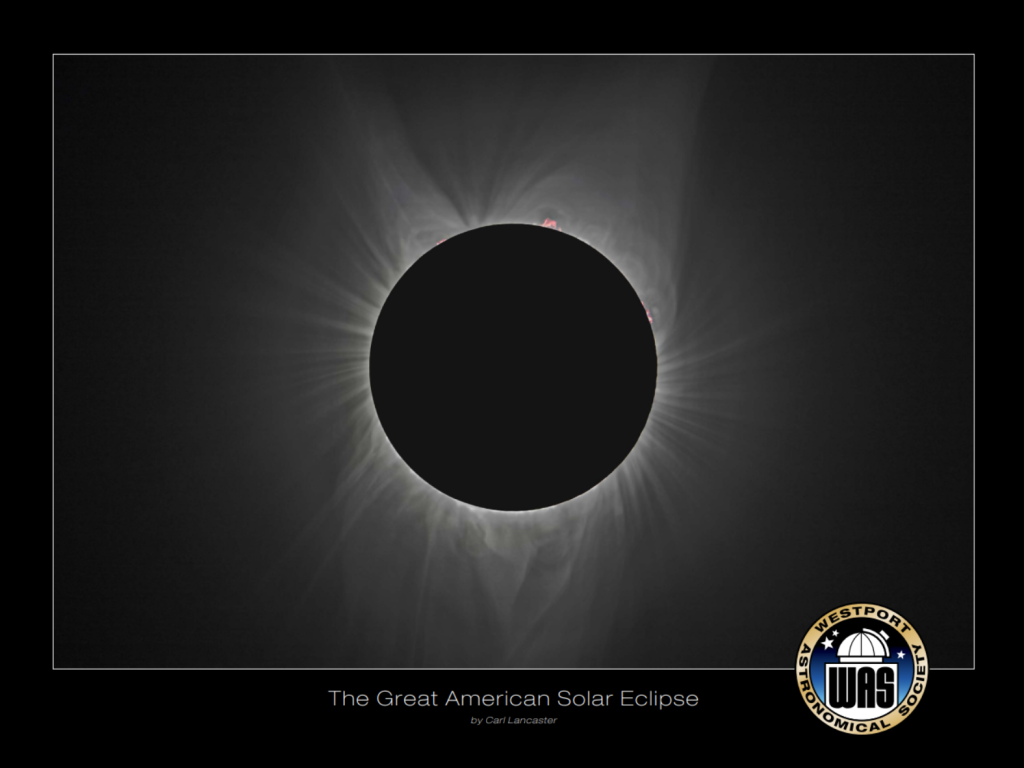
Sierra Harrop, W5DX:
“We expect that a segment featuring the Harbor Creek High School [Erie, PA] ARISS contact will air on 1/5/24. I was in touch with the producer yesterday to provide some additional footage. A teaser for the segment led the 8 AM rejoin of this morning’s broadcast.”
Bill Morine, N2COP, Vice Director, Roanoke Division:
“An outstanding story. [NBC Today Show host ]Harry Smith captured the palpable thrill in the room. A brilliant piece of PR for Amateur Radio. Congratulations and appreciation for all who contributed to make this story happen.”
Bob Inderbitzen, NQ1R:
“The ARISS team does a whole lot to ready these schools and support their contacts. What was particularly exciting about this school was that their teacher was a graduate of the ARRL Teachers Institute on Wireless Technology.
As you may know, Steve Goodgame (K5ATA) attended the contact last month, and even dressed the students in ARRL sweatshirts for their NBC Today show interviews.
Sierra Harrop (W5DX) reported that likely 2.576 million people saw it air live on TV this morning (that’s the typical Today show audience size). She also shared these additional notes:
Here’s the link to the clip https://www.youtube.com/watch?v=w2s_C4o7dfk